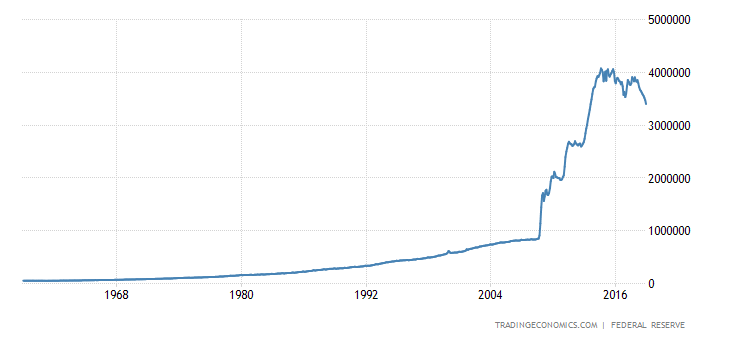Not comparing. Sorry to upset you.
My chart simply shows how inflation devalues the dollar, as part of an article explaining in simplistic terms how inflation makes everything cost more. You can't compare the two charts -- they map different variables. Tilt my chart 90 degrees counter-clockwise and you'll see the parabolic curve. But still not a comparison. My chart illustrates how inflation works, yours illustrates how DJIA stock prices have risen over time.
A graph of my savings account (pure dollars with minimal interest) would show the same type of curve as your chart. But that doesn't mean my savings account is a bubble. It means I've benefited from compound interest. Even though it looks the same, you can't compare it to your graph or the one I linked to.
Any chart that measures an asset in dollars will show a parabolic growth in aggregate -- because of inflation. Yours covers 1970 - today, the one I linked to covers 1947 - today, and they both explain different things.
Again, I didn't mean to offend you. I agree with your conclusion and your chart is dead on -- "mainstream" investors have their heads up their ass if they think cryptos are any more risky than stocks or bonds. That doesn't mean stocks are in a bubble. Stock prices have shot up because the Fed has pumped a crap-load of dollars into the market.
I'm not upset man, it must just be my typing style or whatever I like to get straight to the point. You might very well be right that it is the printing of dollars which has set this off and I actually just looked at the historical chart for Money Supply of the US and it is fairly similar to the DJIA.
I'm not bothered if you are right or I am right here, I just want the facts. I do still believe it is a bubble because you can't just keep pumping dollars into the economy forever. It is going to end badly at some point. Do you expect the DJIA to go up vertically forever? Just asking not trying to offend you or anything.